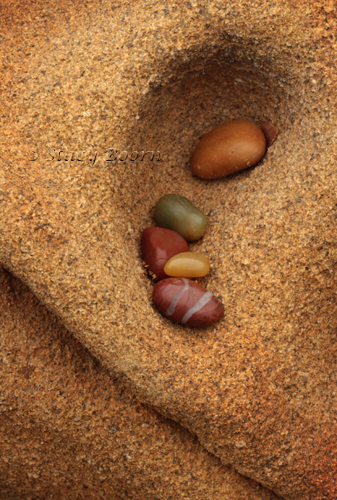Harbor seals sometimes sit on rock ledges when the tide is changing to let the water run over them. When the incoming tide is ebbing all around them they will lift up their flippers and heads creating a smile like image in the wake.
On land the harbor seals are the shyest of the “Pinnipeds,†which means the “fin-footed.â€Â But once fully back in the water they playfully move with ease closer to their adoring on-shore audiences.
 The pinnipeds are a family of chubby mammals that include seals, sea lions, walruses, elephant seals and the harbor seal. The harbor seal has a short stubby foreflipper and makes a very gentle sound while the other seals and sea lions are real barkers.
The pinnipeds are a family of chubby mammals that include seals, sea lions, walruses, elephant seals and the harbor seal. The harbor seal has a short stubby foreflipper and makes a very gentle sound while the other seals and sea lions are real barkers.
Since the harbor seal needs to be close to land to sleep, molt, give birth and nurse their young, it is likely you will see them often in their rockeries and home territories. This is why I return often to the rocky shores of the San Mateo Coast. The many summer foggy drizzly days make for a nice muted light in which to photograph them.
A tide table, telephoto lens, a fairly fast shutter speed (1/250 or faster) and time to spend is your best bet for capturing the habits of the harbor seal. Because of their colors, (grays, whites and browns) they easily blend into the rocks on which they perch. The rocks around the beaches near Pescadero (especially Bean Hollow and Pebble Beach –not the golf course) provide safe areas for basking harbor seals.
Since they usually live 20 – 30 years it is likely you can photograph the same harbor seals for a very long time. All other pinnipeds migrate, but the harbor seal stays in its haul out zones.
If they are a little beyond your telephoto range or have gone fishing you can turn your attention in this area to many other subjects. One of my favorites is the small caverns in the rocks, called Tiffani, and the pebbles that the tide-waters toss into them. Many of the pebbles are less than a quarter of an inch in diameter so you want to get in close.
With close up photography you have the option of controlling many elements in your images including the light. If it is sunny the light will be too harsh and garish causing your colorful arrangement of pebbles to be watched out and the shadows in the caverns to be too dark. Usually you have naturally diffused light, thanks to the fog. Otherwise use a diffusion disc to soften the harsh lines and shadows caused by direct sunlight.
Photograph the pebbles where you found them or begin to move them around like the meditative arrangements of a Zen gardener. Yellow with green and then green with burgundy, and striped with solids…. just keep an eye on the incoming tide because you can get lost (or found) among the pebbles for hours.


